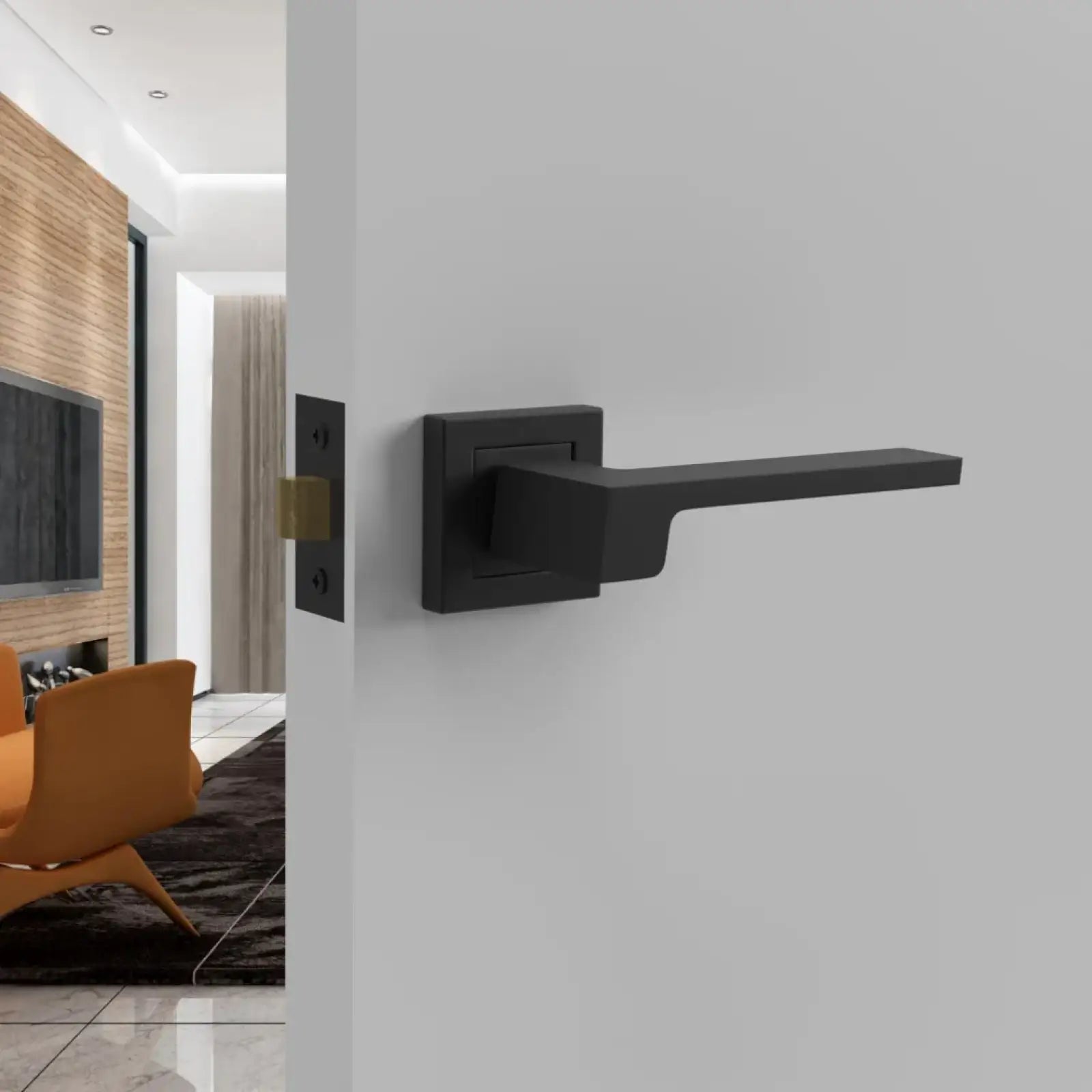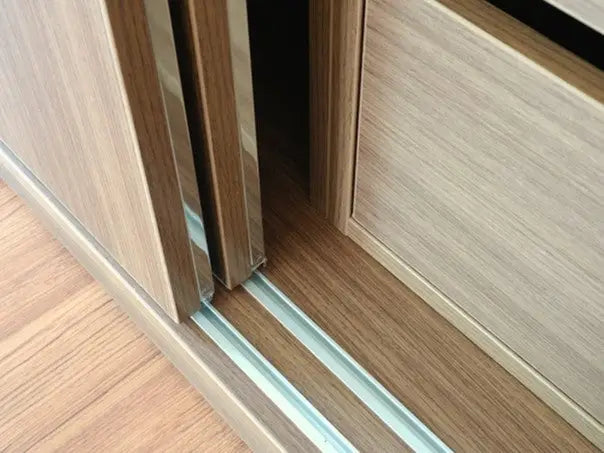How To Clean Sliding Door Tracks
Sliding doors are a great addition to any home, offering style, convenience, and a seamless connection between spaces. However, dirt, debris, and grime can build up over time in the sliding door locks or tracks, making the doors difficult to open and close. In this blog, we will focus on how to clean sliding door tracks effectively to restore smooth operation and extend your doors' lifespan.
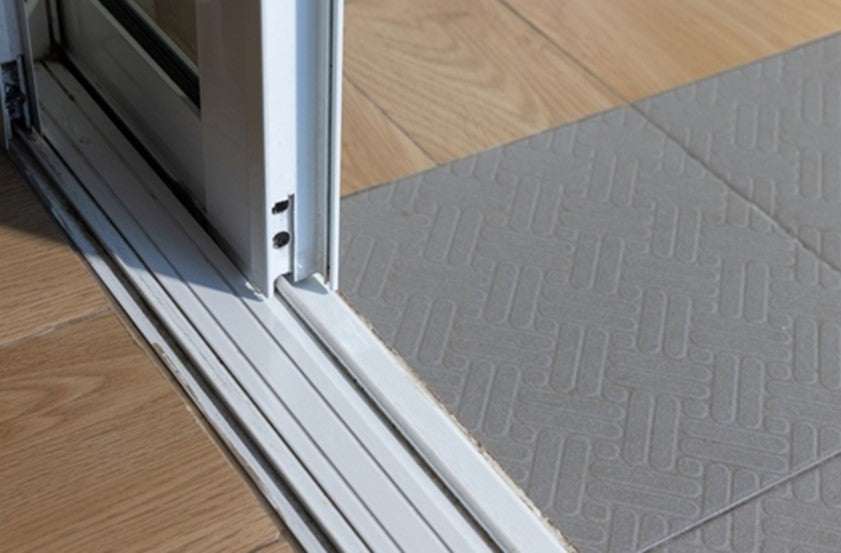
Essential Tools and Materials for Cleaning Door Tracks
Cleaning sliding door tracks is essential for their long-lasting performance and appearance. The good news is you’ll likely have all the equipment you need to clean door tracks at home. To be sure, here is a handy checklist of the most important materials and tools to clean sliding door tracks:
- Vacuum cleaner with a brush attachment
- A stiff and/or wire brush and a toothbrush
- Steelwool
- Micro-fibre cloth
- Cleaning agents: white vinegar, mild detergent, baking soda and/or non-abrasive commercial track cleaning product
- Spray bottle or bucket for your cleaning solution
- WD-40 Specialist, Long-Lasting Grease Spray or a silicone-based, non-stick lubricant
- Drop sheet or towel
- Choosing the Right Cleaning Solutions
Various commercial cleaning solutions are available specifically for cleaning sliding door tracks. A more affordable option that works equally well is simply using a mixture of dishwashing liquid and water. This is effective for removing most dirt and grime.
White vinegar mixed with water in a 1:1 ratio is also a popular cleaning solution. For more stubborn buildup, use a mix of white vinegar and bicarbonate of soda at a 1:2 bicarbonate-to-vinegar ratio.
Remember that some door tracks may have different cleaning requirements. It all depends on their construction and the material they’re made of. If you’re unsure, check the manufacturer’s instructions before cleaning.
Best Tools for Hard-to-Reach Areas
Various tools are specifically made for cleaning hard-to-reach sliding door track crevices and sliding door locks. These include hand-held fabric groove cleaners, specialised crevice cleaning brushes, and pipe brushes. If your vacuum cleaner has a crevice nozzle, this will also come in handy.
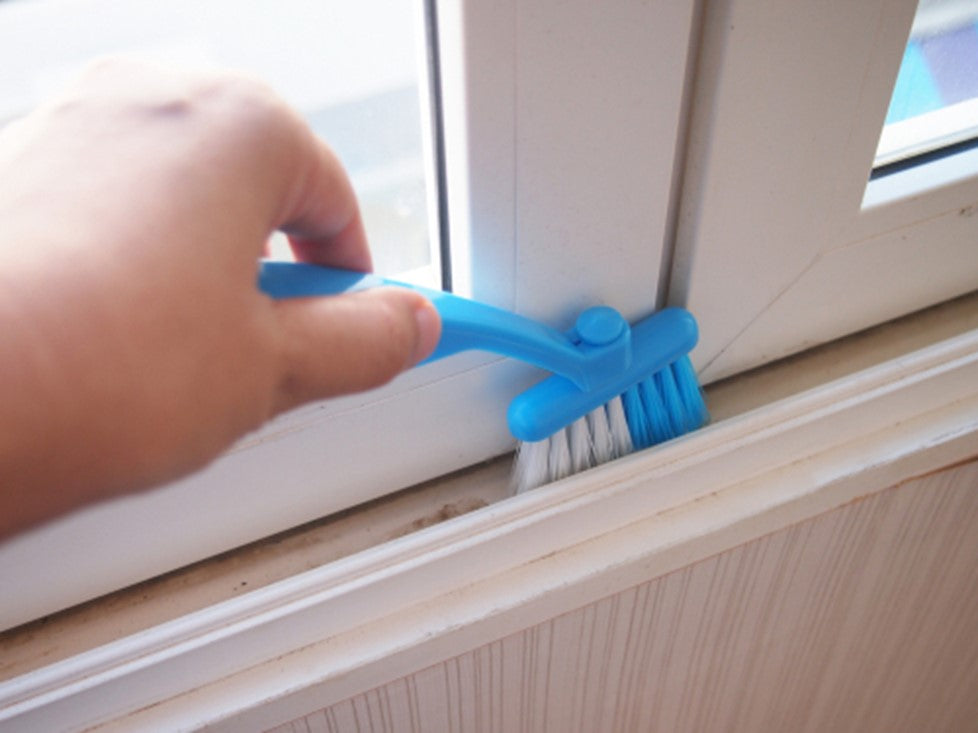
Preparing Your Sliding Door Track for Cleaning
If your sliding doors can be removed easily, this will be the best way to clean your tracks. How you remove the doors depends on whether you have top-hung, bottom-roller, or bifold doors. If you remove the doors, place them safely to avoid damage, especially if they’re glass sliding doors.
If not, simply open the doors to expose the tracks and crevices. Inspect the tracks for blockages caused by large objects or obstructions, such as pebbles or leaves, and remove them manually. If the floor around the sliding door is carpeted or sensitive, place protective material, such as a towel or a drop sheet, to catch drips from the cleaning process.
Removing Loose Debris and Dirt
The best way to clean sliding door tracks is to remove any visible dirt and debris using a vacuum cleaner. Then, use a brush or broom to clear out any remaining debris and dust. A toothbrush or special crevice cleaning brush will help you reach those hard-to-reach places.
Apply your chosen cleaning solution to the tracks using a cloth, sponge, or spray bottle. Let the solution sit for a while, then rinse or wipe away with a damp microfibre cloth. This removes any cleaning residue, preventing any potential stickiness or residue buildup.
Allowing the tracks to dry completely is an important last step. This prevents water-related issues, such as rust or corrosion, from impeding the tracks over time. If the tracks are rusty, use a chemical rust remover or steel wool to achieve the result.
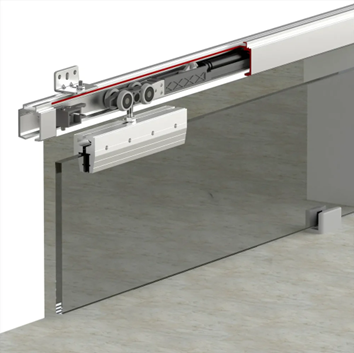
Identifying Problem Areas and Damage
Sliding doors can experience various issues and damage over time due to regular use, environmental factors, and lack of maintenance. Here are the common problem areas and types of damage that often occur:
- The build-up of dirt, dust, and debris on the tracks can obstruct the door’s smooth operation.
- Tracks can bend or be damaged by heavy impacts, large pebbles stuck in them, or improper use, making it difficult for the door to slide.
- Exposure to moisture can cause metal tracks to rust, particularly in coastal areas or damp environments.
- Over time, rollers may wear out, or obstructions can cause them to break or become misaligned, causing the door to wobble or jam and the tracks to crack.
- Debris, worn-out components, or mechanical issues may cause the door to become stuck or even come off its tracks.
- If the track squeaks or makes a grinding sound, it may signal a lack of lubrication or damaged rollers or tracks.
Deep Cleaning Different Types of Door Tracks
How you clean your sliding door tracks depends on the track type and the material they are made of. In most cases, simply follow the steps outlined in this blog for a deep clean. Ensure you get into every nook and cranny, and that using a commercial cleaning product is appropriate for the type of material the track is made of.
How to Clean Sliding Door Tracks Made of Aluminum
Knowing how to clean aluminum sliding door tracks is relatively straightforward. The most important thing is to avoid using strong chemicals that can damage the aluminum and the finish applied to the tracks. Also, avoid using excessive water when cleaning, as if not properly dried, it can cause erosion over time.
How to Clean Sliding Door Tracks Made of Vinyl and PVC
Occasionally, you’ll find sliding door tracks made of vinyl or PVC. Regularly cleaning and maintaining these types of tracks is important as, unlike aluminum tracks, they are more likely to break down over time. They are especially prone to becoming brittle or compromised when exposed to extreme temperature shifts.
The easiest way to maintain them is to regularly vacuum and dust away any accumulated debris and dirt on the tracks. Wipe off the surfaces with a mix of vinegar or dish soap and water, then rinse and leave to dry. Avoid harsh chemicals and abrasive products that might scratch or damage the vinyl or PVC.
Maintaining Clean Sliding Door Tracks
Sliding door track cleaning is important, but so is regularly maintaining them to avoid damaging the rollers and the door. Lubrication is also essential, as this ensures smooth operation and prevents unnecessary wear and tear.
If you neglect to clean and lubricate your sliding door tracks regularly, your sliding doors could stop working altogether. This can also result in increased wear and tear on the other door components, potentially causing damage that requires costly repairs or replacements.
Regular Maintenance Tips
A great maintenance trick is to apply a silicone lubricant to the clean and dry tracks to reduce friction and prevent dirt and debris buildup. You can use a silicone lubricant specifically designed for sliding door tracks or WD-40 Specialist Long-Lasting Grease Spray. Avoid oil-based lubricants, which can attract dirt.
Make sure to clean dirty or damaged rollers and replace them if necessary. Also, check for leaks by inspecting seals and weatherstripping around the door to prevent water from seeping into the tracks. If the door becomes difficult to slide or the tracks show signs of damage, consult a professional to repair or replace the parts.
You will have to clean the tracks more often in certain seasons. During autumn, you’ll need to clean tracks more frequently to remove fallen leaves and debris. In winter, make sure to remove ice or snow to prevent blockages.
H3: Preventing Dirt and Debris Buildup
You can use a door sweep or brush seal on the door to help prevent debris from accumulating in the tracks. This is especially useful for external sliding doors. You can also place mats near entry points to minimise the amount of dirt brought inside and to reduce debris falling into the track.
H2: Get The Best Sliding Doors From Decor and Decor
We have a top selection of stylish sliding doors engineered for durability and longevity. Choose between top-hung, slide-and-hide concealed pocket door, bifold sliding door or telescopic sliding door kits. They are all easy to maintain, but be sure to bookmark this page if you’re ever stuck on how to clean sliding door tracks.
H2: FAQs
H3: How often should I clean my sliding door tracks?
It depends on their location, usage, and exposure to dirt and debris. High-traffic doors in entryways may need more regular cleaning, but it’s up to you how often to do this. Generally, indoor sliding doors should be cleaned every 1–3 months, and outdoor sliding doors every 1–2 weeks.
H3: Is WD-40 safe to use on sliding door tracks?
WD-40 works well initially but collects dirt and grime in the long run. This may affect the functionality and aesthetics of the space itself. Instead, use WD-40 Specialist Long-Lasting Grease Spray or a silicone lubricant specifically designed for sliding door tracks.
H3: What should I do if my sliding door track is damaged?
A broken sliding door track is not just an issue of functionality, but also of your safety. If the track is bent, broken or worn, your best option is to replace it. Decor and Decor has a wide range of options for you to select from, so contact us today.



